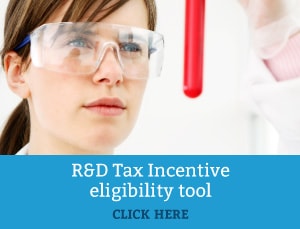Industry R&D Investment Expectations Fall to Decade Low, Stability of R&D Tax Incentives Crucial
February 5th, 2024
In late January, InnovationAus ran a story providing commentary on a survey conducted by Australian Industry Group (Ai Group), showing only 19 percent of firms intend to raise their level of R&D investment, with 69 per cent expected to maintain spending at 2023 levels.
While firms report a positive investment outlook, including for R&D, the net balance score for the indicator has fallen from +26 to +6 — the lowest investment expectation since 2013. This is broadly in line with CAPEX expectations, which fell from +31 to +5.
InnovationAus’ story notes:
- Only 24 per cent of respondents listed R&D investment as their first or second priority, behind business process improvement, staff training and development, and business development;
- Ai Group said this is likely a response to perceptions that the economy will slow in 2024, with 40 per cent of respondents expecting overall business conditions to deteriorate. Less than 30 per cent expect an improvement;
- Despite the increase in nominal support for businesses through the RDTI last year, the government’s spend on R&D initiatives as a proportion of GDP fell to 0.49 per cent, the lowest in 30 years;
Swanson Reed notes the following in respect of this:
- There has been alot of press lately about the reported increasing cost of R&D Tax Incentives. Swanson Reed notes this increase may be an aberration that may moderate next year due to a number of factors including:
- Claims for depreciation on R&D Assets under the temporary full expensing measures, which have expired and are no longer available after FY23;
- Reductions in funding for startups due to raising interest rates and constrained capital markets;
- Increasing R&D Tax compliance by regulators, which we recognise as an important function of programme integrity;
- A recent BCA survey, following the BCA published report titled “Seizing the Moment”, highlighted that if Australia wants sustained wages growth and to maintain full employment we need a reinvigorated economic growth agenda driven by large-scale investment, higher productivity, and greater innovation;
- It is widely accepted that inflation and productivity is one of the largest problems currently facing our economy. Innovation and R&D Activity (including development of more efficient processes to produce goods), is recognised as being key to increasing productivity in the economy. Productivity has been shown to be positively correlated with innovation performance across multiple documented academic studies;
- Companies who are associated with innovation and R&D Activity may be more productive and capable of producing goods more efficiently or at lower cost. This then presents them with the option to:
-
- Offer products at the same cost as their peers, but with increased profit margins; or
- Offer products at lower cost to their peers, to increase their market share.
- Therefore, business investment in R&D should be a key focus of our leaders in helping Australia through the current economic challenges confronting us. Policy makers should ensure that suitable settings are in place (including business access to resources and the maintenance of a stable, generous R&D Tax Incentive) to assist business in playing their role in increasing Australia’s productivity and reducing inflation.
Please get in touch with our office if you would like to speak to someone about a potential claim, or check out our website for more information.
Categories
- ATO Guidance and Materials
- AusIndustry Guidance and Materials
- Case Law
- Federal Budget 2021
- Federal Budget 2022
- For Accountants
- General Information
- Government Policy and Treasury
- Industry Specific Issues
- Interpretative Decisions
- Legislation and Parliamentary Matters
- R&D Tax Credit
- R&D Tax Funding Strategies
- R&D Tax Loans
- Recent News
- Tax Determinations
Archives
- May 2024
- April 2024
- March 2024
- February 2024
- January 2024
- December 2023
- November 2023
- October 2023
- September 2023
- August 2023
- July 2023
- June 2023
- May 2023
- April 2023
- March 2023
- February 2023
- January 2023
- December 2022
- November 2022
- October 2022
- September 2022
- August 2022
- July 2022
- June 2022
- May 2022
- April 2022
- March 2022
- February 2022
- January 2022
- December 2021
- November 2021
- October 2021
- September 2021
- August 2021
- July 2021
- June 2021
- May 2021
- April 2021
- March 2021
- February 2021
- January 2021
- December 2020
- November 2020
- October 2020
- September 2020
- August 2020
- July 2020
- June 2020
- May 2020
- April 2020
- March 2020
- February 2020
- January 2020
- December 2019
- November 2019
- October 2019
- September 2019
- August 2019
- July 2019
- June 2019
- May 2019
- April 2019
- March 2019
- February 2019
- January 2019
- December 2018
- November 2018
- September 2018
- July 2018
- June 2018
- May 2018
- April 2018
- March 2018
- February 2018
- January 2018
- December 2017
- November 2017
- September 2017
- August 2017
- July 2017
- June 2017
- May 2017
- April 2017
- March 2017
- February 2017
- January 2017
- December 2016
- November 2016
- October 2016
- September 2016
- August 2016
- July 2016
- June 2016
- May 2016
- April 2016
- March 2016
- February 2016
- January 2016
- December 2015
- November 2015
- October 2015
- September 2015
- August 2015
- July 2015
- June 2015
- May 2015
- April 2015
- March 2015
- February 2015
- January 2015
- November 2014
- October 2014
- September 2014
- August 2014
- July 2014
- June 2014
- May 2014
- April 2014
- March 2014
- February 2014
- January 2014
- December 2013
- November 2013
- October 2013
- September 2013
- May 2013
- April 2013
- March 2013
- September 2012
- August 2012
- June 2012


 Free Call: 1300 009 390
Free Call: 1300 009 390





 News & Research
News & Research



